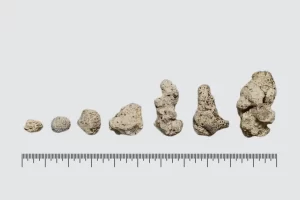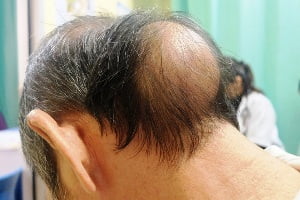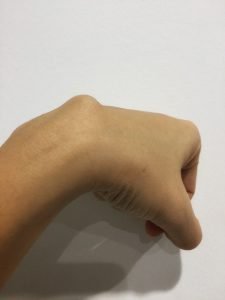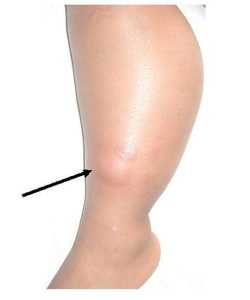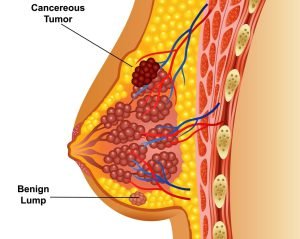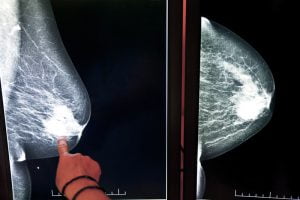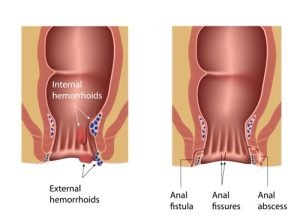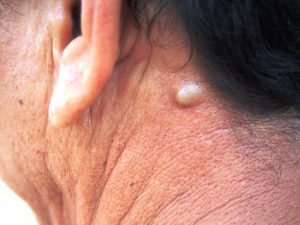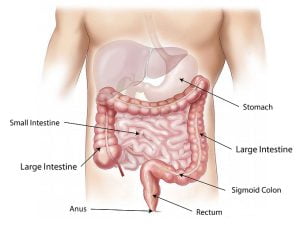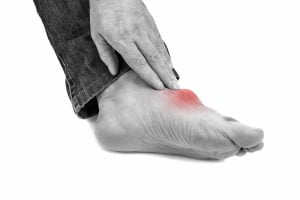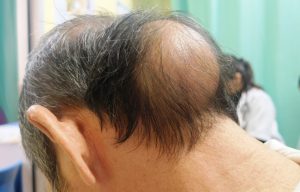Browsing: Lumps and Bumps Graphics
Comprehensive Information, Resources, and Support on Lumps and Bumps
Lumps are harmless swellings found anywhere on the body. They can appear as cysts (small sac filled with air or fluid) or tumors (extra tissue in a small area). Sometimes, cysts develop in bones and cause pain. In a short span of time, bone cysts form a kind of noticeable inflammation or lump and the affected part looks distorted. They may appear on collarbone, wrist
The image shows marked swelling (lump) of the left lower leg that developed 16 months after arthritis onset and 8 months following initiation of anti-tuberculosis treatment. If tuberculosis (TB) affects lymph nodes, it can cause swollen glands mainly at the sides and base of the neck. If tuberculosis affect bones and joints, hips and knees will become painful and swollen. (Image Source: Rajakumar, D., Rosenberg, A.)
Lumps can appear anywhere on the body. Most of them are harmless. However, many lumps may be a sign of some serious problem such a breast lump. Breast lumps can indicate a breast cancer. Therefore, it is important to talk to a breast cancer specialist if you note any unusual lump around the breast. X-ray mammogram images are taken to diagnose a breast cancer. The image shows an X-ray mammogram of breast in a woman.
Lump is a mass of irregular shape and size which can appear anywhere in the body such as in armpit, neck, anus, breast, etc. These are generally harmless but often are signs of an abnormality. If a lump appears near anus, the cause may be an injury or infection. Anal swelling can be an abscess, skin tag, genital warts, fissure (tear in anal lining), etc. Lumps near anus are often supposed to be a sign of hemorrhoids. Hemorrhoids are clusters of tissue with blood vessels around the anus and lower rectum. These may be located inside the rectum (internal hemorrhoids), or may develop under the skin around the anus (external hemorrhoids).
A lipoma is usually a knot or lump of fatty tissues grown under the skin. They are probably harmless and can be classified as tumors. Usually, they are non cancerous or benign tumors. Lipomas or skin lumps are found on upper back, neck, shoulders, armpits, buttocks, upper thighs, etc. Certain medical conditions such as gardner’s syndrome, cowden syndrome, adiposis dolorosa, familial multiple lipomatosis, etc lead to the formation of skin lumps. Surgery (to cut out the lumps), steroid injections (to shrink the lumps) and liposuction (withdraw out the fat) are some treatment options.
Lumps near anus are quite common. Lumps can develop due to a variety of reasons including hemorrhoids, swollen blood vessel that can hang outside the anus, a rectal prolapse, genital warts etc. Lumps near anus are very similar to hemorrhoids and are often misdiagnosed. Sometimes, they may bleed. Lumps can appear anywhere on the body. Most of them are harmless but it’s important to see a doctor if you’re worried.
Gout is a disease in which crystals of uric acid are deposited in the joints, tendons, and skin. Gout leads to pain, redness and swelling in a particular area such as toe, ankles, knees, fingers, elbow, etc. Inflammation occurs due to the deposition of uric acid crystals (tophi) in the joints or surrounding tissues, which appear like small lumps under the skin. Lumps due to gout become firm or harden with time.
A lipoma is supposed to be a mesenchymal tumor which begins to develop from the adipose tissue. Lipomas are benign tumors or fat tissue lumps which are soft and movable. They are generally found on the head and neck, trunk, and upper and lower extremities. Giant lipomas on head or scalp are rare. A huge lipoma on scalp is supposed to be more than 10 cm in size (diameter) and about 10 g in weight. Giant lipomas in scalp are a cosmetic problem and are generally treated through surgery.
ADVERTISEMENT
